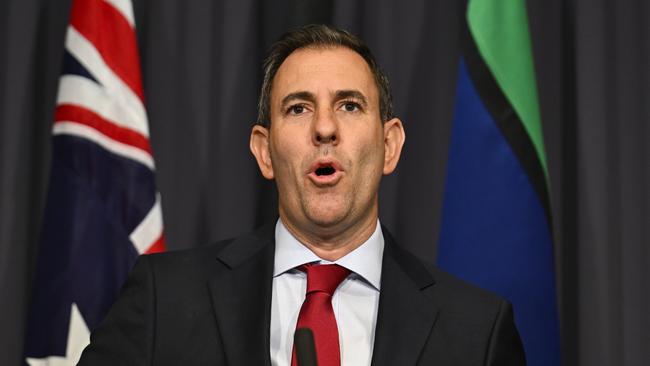So, how do you solve a problem like productivity?
Make it easier for business to invest according to consumer preference, not government dictate.

Productivity, the ratio of outputs to inputs, is understandably regarded as an arcane topic by most people. It won’t be forming the basis for group discussion down at the pub or over a morning coffee.
Indeed, many people are fearful of productivity, often equating the concept with working harder for the same pay. The link between productivity and living standards is not widely understood even though the research is clear that, over time, the only sustainable way to increase real wages is through improvements to productivity.
It might be tempting to maintain that the primary role of governments should be to promote fairness, though there are different meanings that can be attached to that term. Yet this is to misconstrue the challenge: the bigger the economic pie, the more there is to share.
Without productivity growth, the scope for governments to raise revenue and spend money in the name of fairness becomes much more limited.
It’s encouraging that Jim Chalmers acknowledges Australia has a productivity problem. He spent most of his first term in office blithely assuming the productivity slump was temporary and that the government’s suite of policies would lead in due course to a turnaround.
The Treasurer now claims: “The best way to think about the difference between our first term and the second term … (is) the first term was primarily inflation without forgetting productivity, the second term will be primarily productivity without forgetting inflation.”
That’s a start of sorts, but he’s ignoring the fact inflation is much easier to control if productivity growth is strong.
Chalmers is also flagging the possibility that it will take at least two further terms in office to solve the productivity problem.
The stark reality is that productivity in Australia has been going backwards during the past three years, with a particularly rapid decline in productivity in the non-market sector – think public administration, education and training, health and social assistance. The overall level of labour productivity is now where it was in the middle of last decade
When Labor assumed office in 2022, one of the first things Chalmers did was to reset the annual productivity growth assumption contained in the Treasury Intergenerational Report (and other publications) from 1.5 per cent to 1.2 per cent. Mind you, economists would die for 1.2 per cent at this stage. Average annual productivity growth has been a mere 0.2 per cent across the past decade.
It is certainly true productivity growth has been sluggish in many advanced economies in recent times. This has led some economists to conclude modern economies are effectively operating at the boundary of their output potential, given current technologies and other considerations.
The problem with this proposition is that the US has been a standout. Productivity growth in that country has been powering ahead for more than a decade.
Taking 2015 as the base year, US non-farm labour productivity stood at 113 last year compared with 100.8 in Australia. This is a substantial gap given that even small changes are hard to come by. Rapid growth in business investment, affordable and reliable energy and technology breakthroughs, such as artificial intelligence, have been the main drivers of productivity in the flexible US economy.
At the end of 2024, the Treasurer decided to get on the front foot, productivity-wise, by commissioning the Productivity Commission to undertake several productivity-related inquiries, most of which the PC had recently covered. In this way, he could claim to be focused on productivity while still refusing to accept the PC’s recommendations holus-bolus. The five key areas to be covered are “creating a more dynamic and resilient economy; building a skilled and adaptable workforce; harnessing data and digital technology; delivering quality care more efficiently; and investing in cheaper, cleaner energy and net-zero emissions.”
In choosing these topics, he got off to a poor start.
Chalmers’ view that the care economy – including aged care, childcare and the National Disability Insurance Scheme – could promote productivity growth is essentially illogical given the activities are highly regulated and labour intensive.
To be sure, there are some possibilities for higher productivity, such as robot-delivered medicines in aged care homes. But what has happened is the growth of the largely government-funded, low-productivity care economy has had a dampening effect on overall productivity growth.
Equally unfounded is Chalmers’s view that the decarbonisation of the economy will boost productivity, notwithstanding the obvious loss of productivity associated with the overbuild of renewable energy and the need for massive redundancy in the electricity grid.
Indeed, a 2023 Reserve Bank working paper warned: “The transition to renewable energy and lower emission technologies is another key risk. Abatement measures will generally increase production costs for firms, weighing on productivity growth.” The industry figures on productivity also show the utilities sector has been a major drag on productivity overall and across a long period.
It’s also noteworthy that the list of subjects the PC has been asked to cover does not include workplace relations, although there is reference to a skilled and adaptable workforce. In this context, it’s telling that the careful analysis undertaken by the PC on productivity in the housing construction industry concluded productivity in that sector has gone backwards during the past 30 years.
“The number of dwellings completed per hour worked by housing construction workers has declined by 53 per cent (physical productivity) while the gross value added per hour worked – a more comprehensive measure that controls for quality improvements and increases in the size of housing – has declined by 12 per cent (labour productivity).”
The reasons for this dismal situation include complex and slow approval processes; onerous building regulations; a lack of innovation; a lack of scale; and workforce issues, including skill shortages and inadequate and inflexible training.
More broadly, the tranches of industrial relations changes made by the Albanese government in its first term of office are clearly a drag on productivity, particularly the shift to multi-employer agreements, the changed definition of casual work and the “same job, same pay” provisions. The intrusion of trade unions, even where unionisation is very low, into the management of workplaces is another consideration.
It will be a case of watch the productivity space during the next three years and beyond. There are a few ideas around – improving the transferability of occupational licences, banning non-compete clauses for lower-paid workers – but their effects are likely to be relatively small.
Labour productivity has a clear cyclical pattern and any slowdown in the rate of GDP growth, as well as an increase in unemployment, could lead to a rise in the rate of observed productivity growth. Whether Chalmers would want to claim bragging rights in this instance is still unclear.
He would be best advised to concentrate less on what governments can do and more on getting governments out of the way, of dismantling costly and unnecessary regulation and allowing businesses to make investments according to consumer preferences, not government subsidies and dictates.
We once had a minister for deregulation; perhaps it’s time to bring back the role.
Ditching unnecessary regulations, as well as ensuring those that remain are pro-growth, would be a welcome initiative, like the policies being implemented by the Starmer government in Britain.
Businesses need to be able to operate at peak efficiency and to respond to changing market conditions. We also need to see resources allocated in the economy that leads to the highest output, again according to market conditions. In this respect, programs such as Future Made in Australia are a highway to lower productivity.
Just because productivity and retail politics are not a good mix doesn’t mean the Labor government should ignore productivity. Indeed, it should be a strong focus because so much else ultimately hangs off our productivity performance.




